#Turritopsis
Explore tagged Tumblr posts
Text
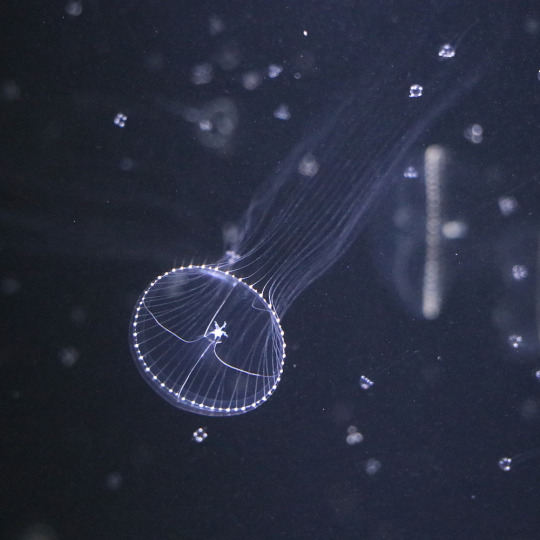
エイレネクラゲの仲間 Eirene sp.
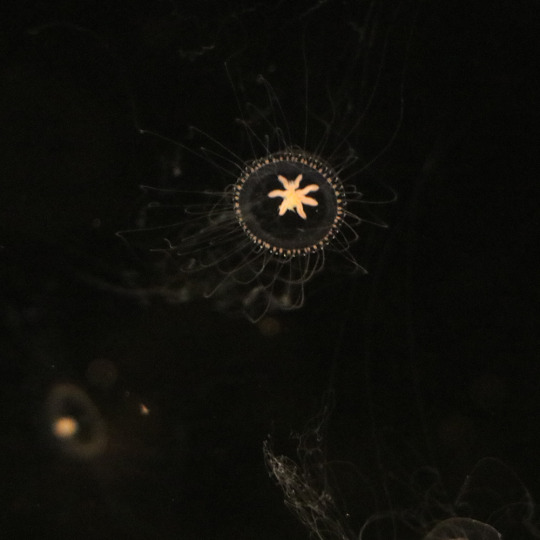
エダクダクラゲ Proboscidactyla flavicirrata
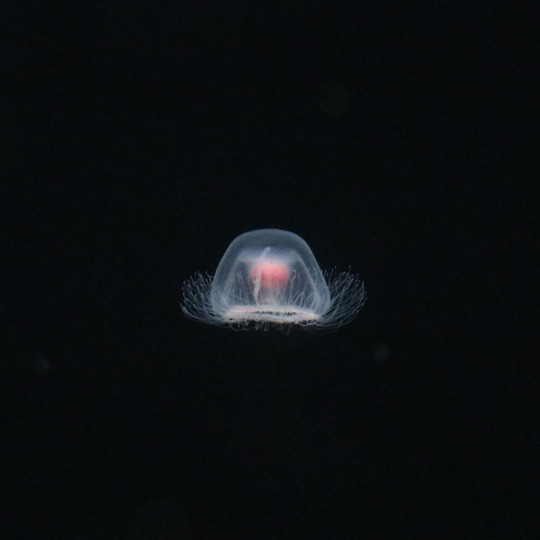
ベニクラゲの仲間 Turritopsis spp.
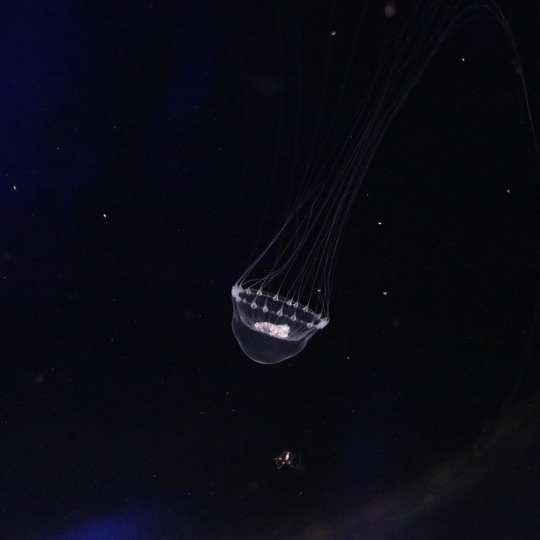
ヒトモシクラゲ Aequorea macrodactyla
クラゲ展示が充実していてこのへんでは見慣れない種類がたくさん見られてよかった
@もぐらんぴあ
The jellyfish exhibit was also extensive, and I was glad to see so many rare types of jellyfish that are not often seen in my area.
@Moguranpia
#もぐらんぴあ#Eirene#Proboscidactyla flavicirrata#Aequorea macrodactyla#Turritopsis#immortal jellyfish#jellyfish#Cnidaria
55 notes
·
View notes
Text
Turritopsis
Turritopsis – oil painting on canvas – 18″ x 26″
#abstract expressionism#animal artwork#animal money#assorted beasts#oil paintings#roswellsplace#turritopsis
0 notes
Text
turritopsis dohrnii I love you /p
#turritopsis dorhnii#immortal jellyfish#turritopsis#jellyfish#NO CAUSE WDYM THEY ARE ABLE TO REGENERATE INTO A YOUNGER STAGE?!#THATS SO COOL WTH??!??!! [literally my favorite animal]#GRAHHHHHHHH SO CUTE. IM GONNA MAKE AN OC BASED OFF OF THEM /STA
0 notes
Text
youtube
椎名林檎ともも - ほぼ水の泡
0 notes
Text
Animal of the Day!
Turritopsis nutricula (Turritopsis nutricula)

(Photo from Penn State)
Conservation Status- Unlisted
Habitat- Atlantic Ocean; Indo-Pacific Ocean; Caribbean Sea
Size (Weight/Length)- 5 mm
Diet- Plankton; Fish eggs
Cool Facts- Dubbed the immortal jellyfish, Turritopsis nutricula can reverse its aging and, in theory, never die due to old age. Once sexually mature, they can change their cells to revert to a juvenile state. The changes in its cells can be observed in their digestive tract and their outer umbrella. These deep sea jellies are rarely ever seen outside of cameras on oil rigs and oceanic drone exploration. However, these jellies are still threatened by a multitude of predators and ocean pollution. Through observation of their cells, medical institutes are hoping that the way the immortal jellyfish de-ages its cells will give us insight on a possible cure for cancer and even reverse aging in humans.
Rating- 12/10 (Honestly, just ridiculously cool.)
#animal of the day#animals#jellyfish#marine animals#friday#august 11#immortal jellyfish#Turritopsis nutricula#biology#science#conservation#the more you know
370 notes
·
View notes
Text
#there are many benefits to being a marine biologist#marine life#marine biology#jellyfish#turritopsis dohrnii
13 notes
·
View notes
Text

a handful of mercreatures
#not silm#art#i should have a tag for original art huh#original art#character art#character design#mermaid#merfolk#volcano snail#scaly foot gastropod#ribbon worm#t dohrnii#turritopsis dohrnii#blue glaucus#e chlorotica#elysia chlorotica#nudibranch#i should do some more mernudibranches sometime#needed to get some creativity flowing for a comm and turns out drawing random colorful critters helps with that
34 notes
·
View notes
Text
youtube
7 notes
·
View notes
Text
Me: Aw, my ideas for ectonurite reproduction are unrealistic, good thing I can use magic and the presence of Anodyne to justify them!
The humble turritopsis dohrnii: Let me introduce myself
So, after bumbling the idea of how the freak ghosts would produce more of themselves, I can now use an actual real world base to actually understand how the mechanisms would work.
Even though I've linked where I found out about the aptly named 'immortal jellyfish' I'm not going to expect anyone to read it, especially since it's pretty dry as more of a scientific debrief on the life-after-adulthood cycle of the t. dohrnii, but to summarise; outside of the standard reproductive cycle, a 'reverse development' would start in the medusa stage (essentially the adult stage but both mature and immature medusae can reverse develop), transition to a ball-like cyst stage where their features disappear, then metamorphizse back into a polyp where it would then reenter the standard reproductive cycle by developing from a bud to an adult polyp again to reproduce asexually, creating medusae once again. It's not quite as extreme as to say it reverses it's mitosis, simply that the transition to becoming a cyst allows for the cells to metamorphose and reattach themselves to the sea floor as a polyp, a 'hydroid colony' with reproductive zooids (something about 'fulmini = siphonophore' post).
Anyway! That's the general gist and I wanna go ahead and apply that to ectonurite AND expand on how it'd define their culture, not just being genetically immortal but also how the different life stages interact socially.
One thing I didn't mention in the summary but will use as an introduction to this section is that a precursor to the reverse development process is a 'weakened' state, which aside from the slow natural degradation of aging and a more controllable but also slow deterioration from the environment (faster if the environment is at least slightly harmful), also includes physical damage. I know I haven't made a whole post about this before but I think I might've implied in other topics that ectonurites need to die in order to reproduce, but I suppose 'dying' is now less literal as it's more the cells work overtime to heal from whatever physical issue put the individual into their state, doing so by morphing them into what amounts as scar tissue; a cyst. A lesion, a wound, a scab. Something that will in it's own right metamorphose yet repair in it's own right, become something new directly from the old.
An ectonurite medusa, the main body beneath the skin, would undergo the process of reverse development and become a cyst, the skin it's new cocoon yet also it's sail, leading the pulsing core of the cyst where whatever winds will take it. It will eventually make landfall, whether it was lead by the environment or nurtured by observing family - siblings and cousins and auncles but no parents, parents are impossible to have - and it would begin to metamorphose using the skin as nutrients and begin the steps again to become a polyp, a sprouting flower. Wherever they had landed they have become something new, and will continue to develop into being that something new until they create themselves once again, being born of their own body and creating more than they had ever been alone. From one into a myriad, the budding of the polyp creates more of themself and though in large quantity, the mortality rate is quite frighteningly significant. However when all is said and done, the asexual reproduction of the polyp spawns new descendants of the original medusa, in clutches of 5-20 on average; some more... some less.
Ectonurite spawn are still affected by their anti-mana life force, in reaction to the intersection between the planes allowing Anodyne and Lederdomain influences to spread amongst Anur Phaetos, so no matter where they end up budding they still take on the traits and attributes of the life around them like a sun-hungry plant. Technically fully mature medusa are also affected by this but it occurs less due to their final state, it is the cyst that initially begins to integrate the medusa's external influences into it's genetics, which in turn it uses in it's metamorphosis including the older genes present in the skin. Sisters Zs'Iza and Zs'Oise are an example of such with their visibly transylian faces in addition to their skin having the bandaged texture of thep khufan's many limbs. They are also an example of the 'less than average' clutch size a polyp can develop, a scorn say a power-hungry High Ecto-lord cannot bare to face, let alone acknowledge that it was amongst his genetics to barely remain biologically immortal.
AKA the reason why Zs'Skayr held interest in the Omnitrix, preservation of his genetics in a way that his species could even compare to even as close as they try. Something about desiring something more when it is just out of reach instead of being completely unattainable, immortality an easy concept to grasp when it is not hard to deride reincarnation from ones own natural biology. Especially since with the technology of the Omnitrix inherently blocking the influence of mana and thus rendering Zs'Skayr completely himself without the genetic differences of the life around him.
Speaking of the High Ecto-lord (a dumb name I'll give it the benefit of a mistranslation of a Phaetan or even a general Anurian term into English to cope with it), politically with their reproduction in mind I can see it in two ways; an absolute monarchy where the High Ecto-lord passes the role to their next life or something like a post-constitutional monarchy (emphasis on post-monarchy) where ectonurites have biological knowledge to know that appointing the one literal same guy over an over again with absolute power is bullshit but they recognise them as a figurehead with a political force of chosen reps behind them. Having a preference for the second, I'll say that Zs'Skayr is extra motivated to figure out actual immortality of the self in order to retain what little rule he does have, especially if with his clutch sibling only ending up producing two young with no other family of his in Zs'Castle Zs'Skayr to speak for, it seems he is at the end of his rope and wants to cling onto that for as long as infeasibly possible.
Moving on and hah, reverse developing this discussion to an earlier point, let's go back to ectonurite cysts and expand what I mean by 'observing family'.
Ectonurites, though biologically immortal, do host something equivalent to that of a funeral. However, unlike most funerals where the person who's the main event OF the funeral is very much dead and lacking any agency over the event, ectonurites old significant age or those with a significant amount of physical damage host their own funeral; in some cases, either immature medusae who's current combination of genes have given them rapid cell death and accelerated aging, or someone is significantly injured they cannot do much anything else, a funeral is hosted for them. It's an event that simultaneously mourns the old and celebrates the new, where during the middle of the funeral the host instigates their reverse development (or it's instigated for them) and the procedure from medusa to cyst to polyp takes place. These events often take place outside, but if the atmosphere is thick enough and there are no land-locked species in attendance then they might take place in the air itself, if not the full event where maybe the host wants a feast or activities before they reverse then in the reversal itself. This is done to make sure the cyst has ample time to drift to be coerced into drifting into a spot they and the family agreed upon away from the event space, more often than not directed to a family garden or a community garden, but sometimes in spots the host specifically wished to drift to or even through chance alone.
This can have a few Karen moments treated similarly to the way say human mother-in-laws demand full creative control over their children's wedding or guests that want all the attention come wearing white to the very same, but applied to what is essentially simultaneously funerary rights and also a baby-shower hah. The Tr'Riken moment perhaps for family name given name *pans over to me scrabbling to piece together a Phaetan equivalent name to Karen* maybe Pani'Kn or given name family name, who knows.
And with funerals being as casual conversation as humans consider weddings to be, sometimes some auncles siblings and cousins like to push the idea of their family member hosting a funeral someday, especially since unlike marriage it's a pretty guaranteed thing to happen. Sometimes though family would pester ectonurites with benign or otherwise non-terminal diseases illnesses or disabilities with arranging funerals because 'well, this combination of genes hasn't really worked out for you, but if you spend time with [xyz] and host one maybe you could get a different pattern and avoid all that'.
What I haven't mentioned yet is the family and community gardens. Gardens of polyps that either live on family property or exist in lots where housing and or hospitals are close by. When one says biologically immortal one might assume that the polyps that produce their youth asexually would be also immortal and thus outgrow any physical lot, but that is untrue. Instead, though the polyps last much longer than a corpse would in addition to being around longer with maintenance of the family or community gardeners, they are not immune to dying of old age. Since polyps are not the reverse developing medusae they cannot themselves persist in life beyond death and just like all polyps do eventually come to pass. Unlike a funeral perhaps where there is a person to actively mourn however, the passing of a polyp is seen as beautiful. The medusae produced by the polyp have legal rights on what to do with the remains of functionally their earlier self, whether to perserve it like a flower crushed within the pages of a book (though much more elegantly than that), to seal it in some resin as the equivalent of an urn (a display piece that does not decay), or to let it 'metamorphose' one last time an let it feed the grounds of the garden it lived in.
Zs'Castle Zs'Skayr's entrance was guarded by pumpkins yes? Like a form of garden right? I wonder what happened to all the Zs' family's polyps *blinks innocently*?
#ectonurite#zs'skayr#ben 10#xenobiology#yippie yippie yippie shout out to the goat (not a goat) turritopsis dohrnii) yippie yippie yippie#i think jarred my fingers they are sore woospies#should i tag my main man? i mentioned him i guess#dot you cry why did you mention transylians and thep khufan if you removed them from your magic and mutants au#did i say i removed them? i just said i changed even the classic series to be more magic and mutant#i may not have actually made the distinction between transylians vs dr viktor and thep khufan vs the mummy#beyond the fact that dr viktor would be mutant and the mummy would be magic that also affects my mummy oc kesi#but that doesn't necessarily remove transylians and thep khufan from this ocverse i shove all my headcanons into#just means at some stage they'll be a lot more alien than one might recall them being#since loboans are like the easiest alien to understand BEING an alien even if human media werewolves are shapeshifters and loboan are not#well- unless you accidentally dyslexia yourself into spelling lenopan but that's like the origin for another oc of mine
12 notes
·
View notes
Text

Rate my ppt I made for my bioinformatics class
#.professor jellyfish speaks#jellyfish#I'll post the whole thing l8r if that's something ppl are interested in#links to separate sources are linked in the speaker comments#turritopsis rubra
9 notes
·
View notes
Note
Do you know much about the immortal jellyfish?
Probably as much as the average person! Well, besides the fact that I can recall its scientific name without looking it up, Turritopsis dohrnii (okay I admit, I put the “h” in the wrong spot). It can revert back to its polyp stage from its free-swimming medusa stage, which is super cool! But you must already know that, since you asked ^^’
#turritopsis is easy to recall because i break it down to turri-topsis#“turri” meaning “furry” (as in the anthro animals) and topsis just sounding like generic singsongy nursery rhyme fairytale stuff#hupsis tupsis pimpeli pompeli and so on#asks#anon#anonymous#anonymous asks
28 notes
·
View notes
Photo

A Turritopsis dohrnii, or immortal jellyfish
(Image credit: Adisha Pramod / Alamy Stock Photo)
#turritopsis dohrnii#immortal jellyfish#jellyfish#adisha pramod#photographer#alamy stock photo#nature#marine
68 notes
·
View notes
Text
was anyone going to tell me there's a species of jellyfish that is functionally immortal or was i just supposed to read that in a chuck tingle novel myself
#it's called the Turritopsis dohrnii if ur curious.#look it up. i hate my life#loverboy wordz#camp damascus
26 notes
·
View notes
Text
I don't wanna study the fucking law to make money off of drawing silly little guys goddamn ittttt
#imma pull a turritopsis dohrnii I am Not dealing with this adult shit I swear#i dont wanna get in tax trouble but also I kinda dont know how much I should care
2 notes
·
View notes
Text
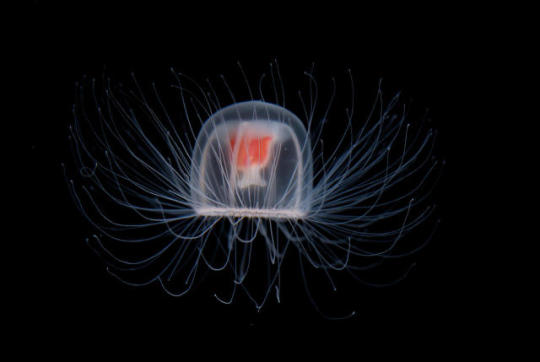
The Immortal Jellyfish
Like all jellyfish, Turritopsis dohrnii begins life as a larva, called a planula, which develops from a fertilized egg. A planula swims at first, then settles on the sea floor and grows into a cylindrical colony of polyps. These ultimately spawn free-swimming, genetically identical medusae—the animals we recognize as jellyfish—which grow to adulthood in a matter of weeks.
These tiny, transparent creatures have an extraordinary survival skill, though. In response to physical damage or even starvation, they take a leap back in their development process, transforming back into a polyp. In a process that looks remarkably like immortality, the born-again polyp colony eventually buds and releases medusae that are genetically identical to the injured adult. In fact, since this phenomenon was first observed in the 1990s, the species has come to be called “the immortal jellyfish.”
The cellular mechanism behind it—a rare process known as transdifferentiation—is of particular interest to scientists for its potential applications in medicine. By undergoing transdifferentiation, an adult cell, one that is specialized for a particular tissue, can become an entirely different type of specialized cell. It’s an efficient way of cell recycling and an important area of study in stem cell research that could help scientists replace cells that have been damaged by disease.
50 notes
·
View notes
Text
youtube
The Immortal Jellyfish Explained
Discover the secrets of the immortal jellyfish! Learn about its amazing abilities, habitat, and the role it plays in marine ecosystems.
Check out my other videos here: Animal Kingdom Animal Facts Animal Education
#Helpful Tips#Wild Wow Facts#Immortal Jellyfish#Jellyfish Facts#Turritopsis Dohrnii#Animal Kingdom#Animal Facts#Marine Life#Ocean Animals#Animal Education#Animal Science#Nature Education#Wildlife Conservation#Fascinating Animals#Ocean Wonders#Unique Jellyfish#Animal Behavior#Conservation Tips#Animal Biology#Ocean Conservation#Interesting Animal Facts#Amazing Animals#Sea Creatures#Marine Biology#Underwater Life#Jellyfish Explained#Life Cycle#youtube#animal enthusiasts#animal habitats
5 notes
·
View notes